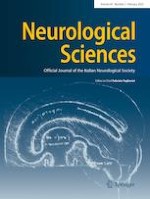Erschienen in:

05.01.2022 | Review Article
Disorders of arousal and sleep-related hypermotor epilepsy — overview and challenges night is a battlefield of sleep and arousal promoting forces
verfasst von:
Péter Halász, Anna Szűcs, Carlotta Mutti, Liborio Parrino
Erschienen in:
Neurological Sciences
|
Ausgabe 2/2022
Einloggen, um Zugang zu erhalten
Abstract
Arousability and reactivity to sensory stimuli are essential features of sleep, discriminating it from coma and keeping the sleeper in contact with the environment. Arousals and oscillations during sleep serve the reversibility of sleep and carry an alarm function awakening the sleeper in danger. In this review, we will explore mechanisms and circuits involved in arousal intrusions within the sleep texture, focusing on the significance of these phenomena in two sleep-related conditions: NREM sleep parasomnias and sleep-related hypermotor epilepsy. Knowledges and gaps in the field are discussed.











